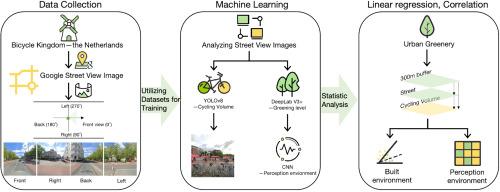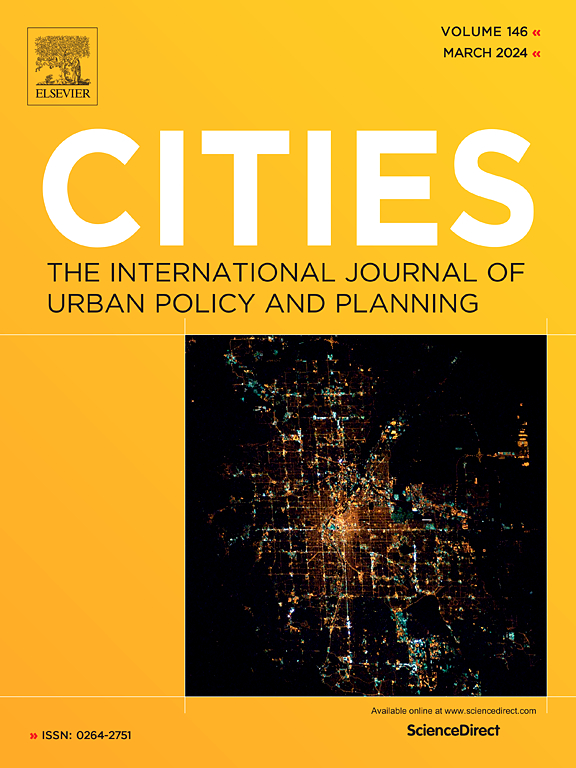Pedaling through the cityscape: Unveiling the association of urban environment and cycling volume through street view imagery analysis
IF 6.6
1区 经济学
Q1 URBAN STUDIES
引用次数: 0
Abstract
Cycling behavior significantly contributes to urban sustainability and enhances public health. However, revealing the relationship between the built environment and public cycling volume, particularly at the street scale, and achieving urban bicycle-friendly objectives remains a challenge due to a lack of large-scale quantitative methodologies and variability in estimation techniques. This study introduces a novel approach employing street-view imagery and machine learning technologies (specifically training deep learning models on large datasets) to overcome the limitations of traditional methods characterized by low efficiency and narrow geographic coverage. For the implementation of this method, we focus on the correlation between urban built environments and cycling volume using Amsterdam, known as a cycling haven, as a case study. The research identifies a dual interaction between street-level and surrounding greenery, manifesting in collaborative and competitive dynamics that jointly shape cycling volume. Moreover, the application of a 4D framework to assess built environments in relation to urban perceptual qualities shows significant correlations with cycling volume. To foster the development of bicycle-friendly cities and enhance public cycling practices, policymakers and urban planners may need to pay greater attention to multidimensional interventions in urban environments.

在城市景观中骑行:通过街景图像分析揭示城市环境与自行车骑行量的关系
骑自行车的行为极大地促进了城市的可持续发展并提高了公众健康水平。然而,由于缺乏大规模的定量方法和估算技术的差异,揭示建筑环境与公共自行车骑行量之间的关系(尤其是在街道尺度上)以及实现城市自行车友好目标仍然是一项挑战。本研究介绍了一种采用街景图像和机器学习技术(特别是在大型数据集上训练深度学习模型)的新方法,以克服传统方法效率低和地理覆盖范围窄的局限性。为了实现这一方法,我们以被称为自行车天堂的阿姆斯特丹为案例,重点研究了城市建筑环境与自行车骑行量之间的相关性。研究发现,街道绿化和周边绿化之间存在双重互动,表现为协作和竞争动态,共同塑造了自行车的骑行量。此外,应用 4D 框架评估与城市感知质量相关的建筑环境,显示出与自行车骑行量的显著相关性。为了促进自行车友好型城市的发展,加强公共自行车的使用,政策制定者和城市规划者可能需要更多地关注城市环境中的多维干预措施。
本文章由计算机程序翻译,如有差异,请以英文原文为准。
求助全文
约1分钟内获得全文
求助全文
来源期刊

Cities
URBAN STUDIES-
CiteScore
11.20
自引率
9.00%
发文量
517
期刊介绍:
Cities offers a comprehensive range of articles on all aspects of urban policy. It provides an international and interdisciplinary platform for the exchange of ideas and information between urban planners and policy makers from national and local government, non-government organizations, academia and consultancy. The primary aims of the journal are to analyse and assess past and present urban development and management as a reflection of effective, ineffective and non-existent planning policies; and the promotion of the implementation of appropriate urban policies in both the developed and the developing world.
 求助内容:
求助内容: 应助结果提醒方式:
应助结果提醒方式:


